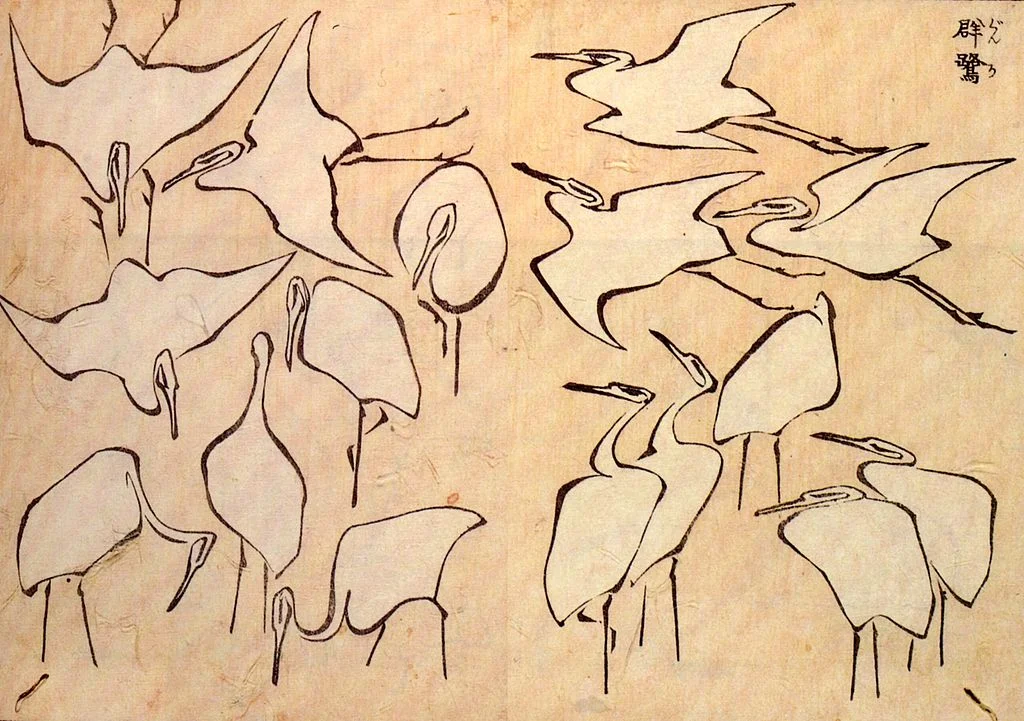Marchand ambulant de fouets en bambou pour le thé, Chine, sumi et couleurs sur papier micacé, Musee Guimet
When I was looking a the lovely collection of Hokusai's small and intense drawings in the Museum at Noyers sur Serein, I kept thinking about his enthusiastic approach to drawing. A brief quote of his about drawing, "Je tracerai une ligne et ce sera la vie", seems such a lofty goal to which to aspire as a draughtsman or woman. It stopped me in my tracks, because it implies such a deep, wide approach to making marks and creating a drawing. The quote in fact is part of a much larger and famous statement Hokusai made about drawing. Hokusai Katsushika, the long-lived and richly productive Japanese artist whose most famous series of woodcuts is probably the Thirty-Six Views of Mt. Fuji, lived many iterations of an artist's life from his birth about 1760 to 1849. He drew obsessively.
In addition to single brush and ink drawings, there are many series of drawings and also books of his "manga". ( In fact, the literal meaning of the term manga (漫画) in Japanese, however, is “curious” or “whimsical drawings,” and this was the 19th century understanding of the word when Hokusai’s first volume of drawings, commonly known as Hokusaimanga, was published in 1814.)
In 1834, as a postscript to One Hundred Views of Mount Fuji, he described his optic on what he considered the bedrock of his art, drawing, thus:
"From around the age of six, I had the habit of sketching from life. I became an artist, and from fifty on began producing works that won some reputation, but nothing I did before the age of seventy was worthy of attention. At seventy-three, I began to grasp the structures of birds and beasts, insects and fish, and of the way plants grow. If I go on trying, I will surely understand them still better by the time I am eighty-six, so that by ninety I will have penetrated to their essential nature. At one hundred, I may well have a positively divine understanding of them, while at one hundred and thirty, forty, or more I will have reached the stage where every dot and every stroke I paint will be alive. May Heaven, that grants long life, give me the chance to prove that this is no lie" (from The Old Man Mad About Art).
I must admit, I devoutly hope that each of us, as artists, does not have to wait until the incredible age of over one hundred and thirty before we can imbue our drawings with life and meaning.
Nonetheless, to make each mark count towards bringing life and impact to an image is what drawing is all about.Not just haphazardly putting down strokes and gliding over the surface of things, but meaningfully, intensely creating an ensemble of lines that convey to a viewer something that the artist feels and perceives. The succinct message in the bottle, in essence, floating in to shore, to tell a viewer something about our world and our human essence, something that perhaps could enhance and change that viewer's experience of life. A lofty goal, yes, but isn't that what being an artist is about?








